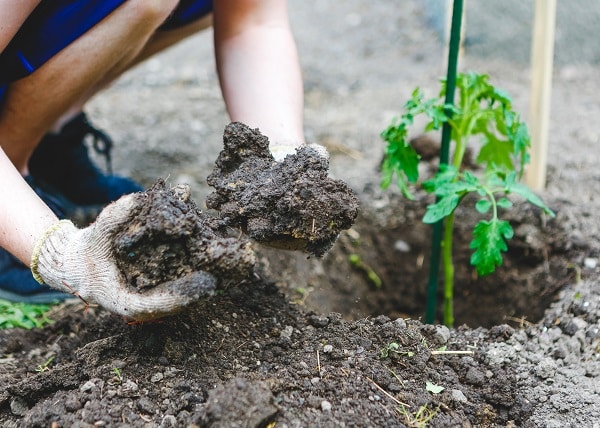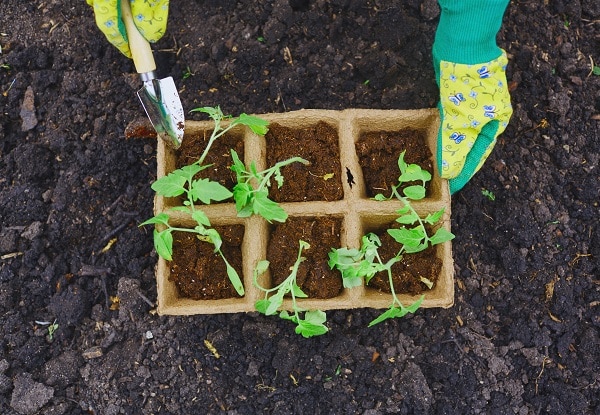Gardening can be pretty challenging at times, especially when you have so many different elements to deal with. Regardless of having the perfect mesh of other elements, choosing the wrong type of soil can make it impossible to grow plants as it can wreak havoc on plants, preventing them from getting the nutrients, moisture, and sunlight they need to thrive.
Before choosing soil for your yard, it is imperative to gain a comprehensive understanding of the different soil types. Soil classifications are typically based on the size, texture, and mineral and nutrient content of the particles that make up the soil. Moreover, the soil type in your yard is also influenced by factors such as rainfall and organic mineral content. Knowing and understanding these factors can help you balance your existing soil by changing its moisture retention, pH levels, or other factors to create a more favorable environment to grow your plants.
That said, here is a list of the most popular types of soil you should know about.
Loam

Loamy soil is hands-down the best type of soil gardening. You can grow almost any type of plant in loam without having to make significant additions or moderations to the soil. Loam maintains its shape when compressed or squeeze and only slightly crumbles when under pressure, which is a prominent indicator that loam isn’t overly loose or dense.
Loam is typically made of equal parts of sand, silt, and clay that give it all its best qualities and maybe a few drawbacks. Loam’s sand content keeps it open, allowing sunlight, air, and moisture to pass through, while the silt and clay content slows down drainage and evaporation, ensuring nutrient and water retention for longer.
Loamy soil warms up early in spring, doesn’t dry out in summer, and drains impeccably in heavy rain, making it the ideal soil type for year-round planting. Although the makeup of loamy soils is already great, you can balance it further by using additives, such as mulch or compost.
Clay

As one of the small natural soil particles, clay packs quite tightly together with very little air space. This lack of air space coupled with its high level of compaction makes clay the densest and heaviest soil type. Due to its high density, clay can easily retain large amounts of nutrients and water. However, at the same time, its high density makes it challenges for air and moisture to pass through the soil.
Unlike loam, clay soil only performs well under certain conditions. Dry clay is soft and smooth, while wet clay is heavy and very hard to work with. So, when you’re using clay, you must plant your plants or flowers in autumn or spring and avoid working on days when the clay soil is overly wet. The best plants for clay soil include bright flowers that require high moisture levels, such as perennials, wisteria, and rhododendrons.
Silt

Silt is another popular type of soil that is has a similar texture to chalk but is far more versatile and easier to use. Made of super-fine particles, silt soil has an incredibly smooth and slippery texture. With particles so fine, silt can be very easily compacted, which helps hold moisture and nutrients in place for a long time. The simplest way to understand silt is to think of it as a compromise between clay and sand soils, as its weight and density fall between these two materials.
Although silt is typically chosen for its easy compaction capabilities, its tight compaction also often leads to drainage problems. The tightly-packed silt particles keep water from escaping the soil, which proves to be pretty problematic for certain types of plants. Moreover, even though silt holds water for long time periods, it can sometimes be challenging for water and air to enter the soil and access the roots.
To remedy the problem of soil compaction, gardeners can take certain actions to break up the compacted soil deposits from time to time. This can often be done by adding a layer of compost to the silt’s top layer or simply turn the top few inches of soil when they seem to be packed too tightly. When it comes to growing plants, many moisture-loving plant varieties and lush grass thrive in silt soil.
Sand

Made up of large particles of quartz, silica, and other rocks, sandy soil has a rough texture that allows the formation of air pockets within the soil. Sandy soil is usually warm, light, dry, acidic, and relatively low in nutrients. The reason behind this is that the loose nature of the soil allows moisture to drain quickly and has high evaporation rates, and since it doesn’t hold moisture well, it becomes tough for plants to access the nutrients before they drain away.
Plants that can survive in drought-like conditions can be successfully grown in sandy soil, including desert plants such as cacti and shrubs, as well as flowering plants such as hibiscus and tulips. You can improve the quality of sandy soil and expand the plant types you can grow in it by taking steps to slow the drainage and limit evaporation. Adding organic materials, such as compost or mulch, are an excellent way to maintain the moisture and nutrient levels of the soil.
Chalk

Also known as calcareous soil, chalk is found in chalk deposits and over limestone beds located deep beneath the ground. Chalky soil is typically sticky and pretty difficult to work with when it’s wet. This chalk can also dry out very fast during the summer.
With a pH level of 7.5 or more, chalk is alkaline in nature, mainly due to lack of moisture and high lime content. The problem with its alkaline nature is that it can stunt the growth of plants, while its excess lime can also potentially cause the plants to turn yellow.
However, luckily, you can still work with chalk by making it more plant-friendly by adding acid-rich materials like compost, peat, or manure. Adding these materials can help neutralize the soil and eventually reduce lime content, improving its water absorption powers. If you want to keep things simple, you can grow plants that thrive in alkaline-based soils, including lilies and lilac.
We hope that learning about the most popular types of soils gives you better insight into the gardening world and makes it easier for you to grow your favorite plants. Happy gardening!